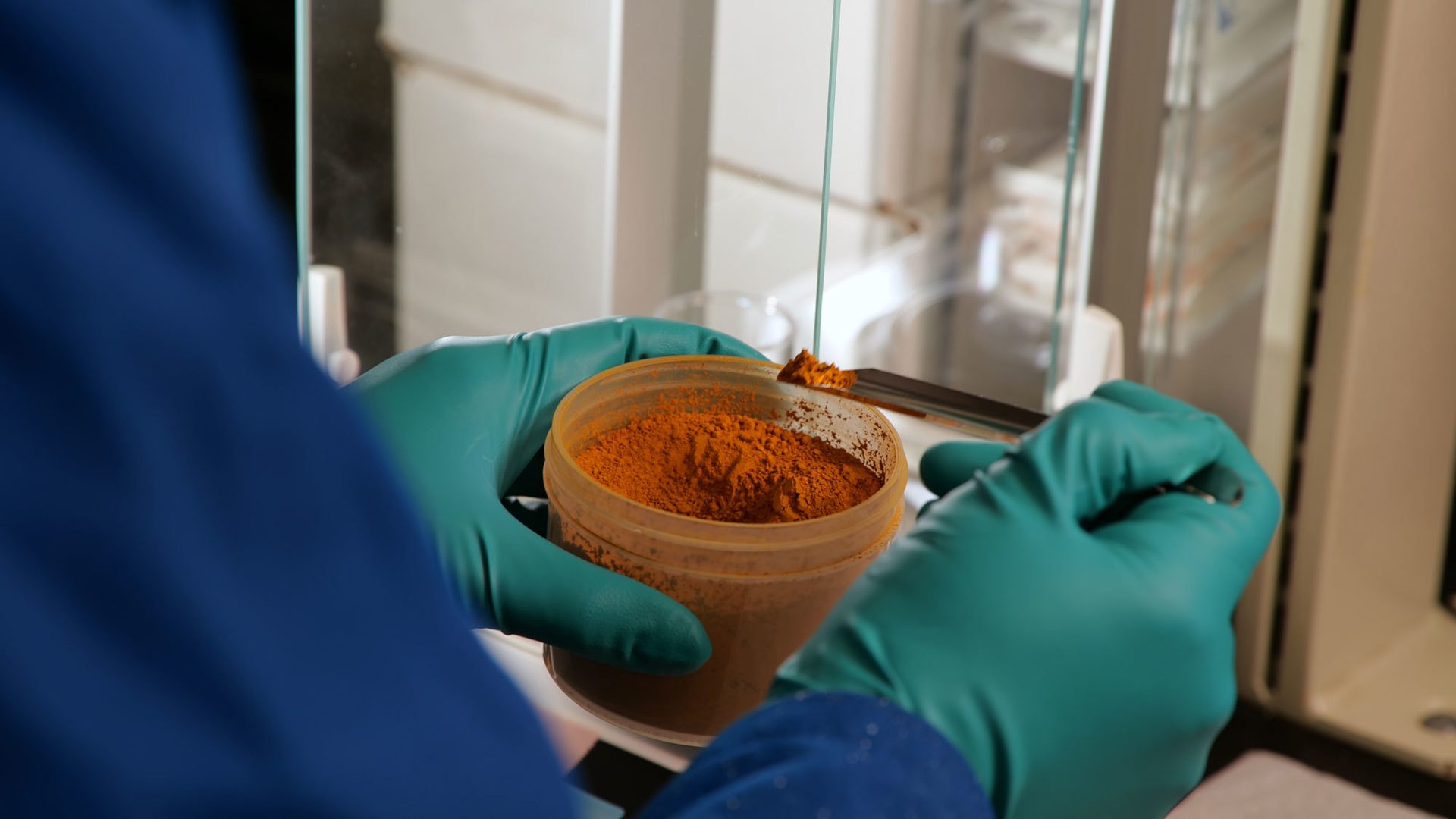Ready to proof — CLJ 6/8/22
KJ proofed on 6/14
Sent correction to Clare
Revised on 6/15
Ready for author

Photo courtesy of Corning
Innovations in Antimicrobial and Antiviral Coatings
The demand for antimicrobial and antiviral coatings has increased dramatically since the onset of Covid, and companies have been working hard to develop new technologies to help keep the public safer and healthier. PCI recently interviewed Avantika Golas, Commercial Technology Manager, Corning® Guardiant®, to learn about the latest antimicrobial/antiviral coatings innovations, how these products are tested and how long they are effective.

Golas
PCI: What has demand for antimicrobial (AM) coatings been like since the onset of the pandemic?
Golas: While demand has been significant, there wasn’t a solution immediately available, and understandably, the United States Environmental Protection Agency (EPA) wanted to be very careful on what they approved. In October 2020, the EPA published interim guidance for supplemental residual products with virucidal claims and expedited the registration of products that are effective against SARS-CoV-2. As a result, there are now two EPA-registered products available for purchase in the U.S. (BEHR Sanitizing Paint and PPG Copper Armor), both with Corning Guardiant as the antimicrobial additive.
Virucidal coatings are a new product category in the United States; prior to 2020, the U.S. EPA only permitted virucidal efficacy claims on liquid disinfectant products. From 2016 to 2020, Corning had several interactions with the U.S. EPA to showcase the need for products with in-built virucidal efficacy in addition to bactericidal efficacy, which required the development of a test method for measuring viral kill. These efforts laid the groundwork for EPA’s guidance changes, and expedited product development and registrations by coatings manufacturers during the COVID-19 pandemic.
We all know that the pandemic drastically changed the way our society lives and works. Many of us now operate with a heightened awareness of viruses and bacteria, and the potential threats they can pose to our health. On top of increased demand for traditional liquid disinfectants and sanitizers, the market has also seen an increased interest in materials that offer in-built antimicrobial properties. We believe that consumers and health professionals alike now recognize antimicrobial surfaces as critical supplements to recommended hygiene practices, and we’re looking forward to seeing how this space will grow in the future. As other precautionary measures such as mask-wearing wane, supplemental disinfectants such as antimicrobial coatings play an increasingly important role by providing an extra layer of protection against germs.
PCI: How did Corning continue with its innovation process during the challenges with the pandemic?
Golas: From the onset of the pandemic, Corning’s top priority was ensuring the health and safety of our employees and communities while continuing to meet the needs of our customers. The company ensured employees working from home had the necessary tools to do so, and implemented masking and health screening at the manufacturing and laboratory facilities that remained open, keeping our operations running while prioritizing employee safety. As the pandemic progressed, the company emphasized employee awareness and education efforts, and continued to adjust protocol as needed to maintain a protected workplace.
With these adjustments in place, business was able to continue almost seamlessly. Corning not only continued to deliver for our global customers, but also increased pandemic response efforts to aid our global community. The company ramped up manufacturing of Corning Valor® Glass vials for vaccine distribution and used our equipment and materials to produce masks and face shields to aid in the shortage of facial coverings.
The Corning Guardiant team, our customer collaborators, and the U.S. EPA worked tirelessly through the pandemic to develop and register coatings with virucidal efficacy against pathogens including the COVID-19 virus. Because of our company’s commitment to protecting employees and delivering results, my team was able to continue coordination with global customers and regulatory bodies to help deliver antimicrobial coatings to the market as quickly as possible, including a donation of 5 million RMB worth of virucidal paint to hospitals in the Hubei province of China.
PCI: Can you talk about how Corning tests AM coatings against different viruses? How can you tell if the testing is valid?
Golas: For products that are truly bactericidal or virucidal (i.e., can kill bacteria or viruses), testing needs to be conducted to simulate everyday conditions and realistic contamination. This protocol is conducted at room temperature (20-24 °C) and ambient humidity (40%-50% RH). To pass the test for effectivity, a product must achieve >3 log kill (>99.9%)of microbes on the surface within two hours. An important part of the protocol is subjecting the antimicrobial surfaces to abrasion and wear, which validates durability and lifetime of efficacy.
Using the appropriate test method to validate the efficacy of an antimicrobial coating is critical. The traditional tests for antimicrobial surfaces are “wet tests” such as JISZ 2801 and ISO 22196. These tests involve the use of a volume of liquid in the bacterial inoculum that ensures that the surface remains wet throughout the experiment. The testing is conducted at high temperature and humidity (37 °C, >95% RH), using a cover slip, typically over a 24-hour period. These testing conditions can inflate interactions between the biocide and the microbes through interactions with the biocide at the surface and extracted or dissolved biocide from the substrate.
Despite wet test standards being unrepresentative of realistic contamination, many regions do not have regulations governing test methods for efficacy and corresponding marketing claims. However, there is a slow trend of regulatory adoption of dry test standards with U.S., Canadian and European Union regulatory authorities mandating differentiated test standards for products seeking claims against harmful germs. We anticipate that the interest in products with virucidal claims driven by the pandemic will accelerate this trend.
PCI: Can you explain how AM coatings work within a paint product and how long the AM efficacy lasts?
Golas: The specifics of the paint’s function and efficacy are dependent on the individual product and the active antimicrobial ingredient being used. Different coatings manufacturers can speak more in-depth about their products, but I can share the details on Corning Guardiant.
Guardiant is a copper-containing glass ceramic that encapsulates the most potent form of copper — Cu+1. This technology works by enabling the gradual release of antimicrobial copper ions on the surface of the coating. Copper ions kill germs via multiple mechanisms of action such as direct cell membrane damage, generation of reactive hydroxyl radicals through Fenton-type reactions, and entry of copper ions into cells through ligand interactions that cause disruption of RNA and DNA functions.
Guardiant starts working within minutes. Coatings powered by Guardiant have been shown to kill >99.9% of a broad spectrum of viruses and bacteria in two hours or less, and to remain effective against viruses and bacteria for up to six years after the application of the paint.
PCI: If a consumer is going to buy a paint, what are some of the things they should look for in an AM product?
Golas: First, look for statements that claim “kill” of harmful viruses and bacteria. Use of this language helps to indicate that the paint has gone through the necessary registration with the U.S. EPA and is demonstrated to actively kill harmful germs. EPA registration also indicates that the paint has been tested using a dry test protocol, which is a more accurate representation of real-world environments. Products with claims of “reduction of growth” in “spoilage-causing”/ “odor- or stain-causing bacteria” are not antimicrobial coatings that have been proven effective against germs harmful to humans.
Second, look for a claim about the longevity of the antimicrobial function. This indicates the useful life of the paint’s germ-killing activity, which could be up to six years.
Third, check the fine print for the list of viruses and bacteria the paint has been tested against. Look for “feline calicivirus,” norovirus, or another non-enveloped virus in this list. Some antimicrobial ingredients are only effective against easier-to-kill viruses and bacteria but claims against a non-enveloped virus help to indicate that the paint is effective against a broad spectrum of germs including those deemed, ‘harder-to-kill.’
If shopping for antimicrobial paints outside the U.S., try to confirm the product has been tested using a dry method such as the OECD (Organization for Economic Cooperation and Development) splash test or the U.S. EPA dry test protocol. Also, look for copper listed as the active ingredient because copper has been shown to be effective against a broad spectrum of germs in wet and dry conditions.